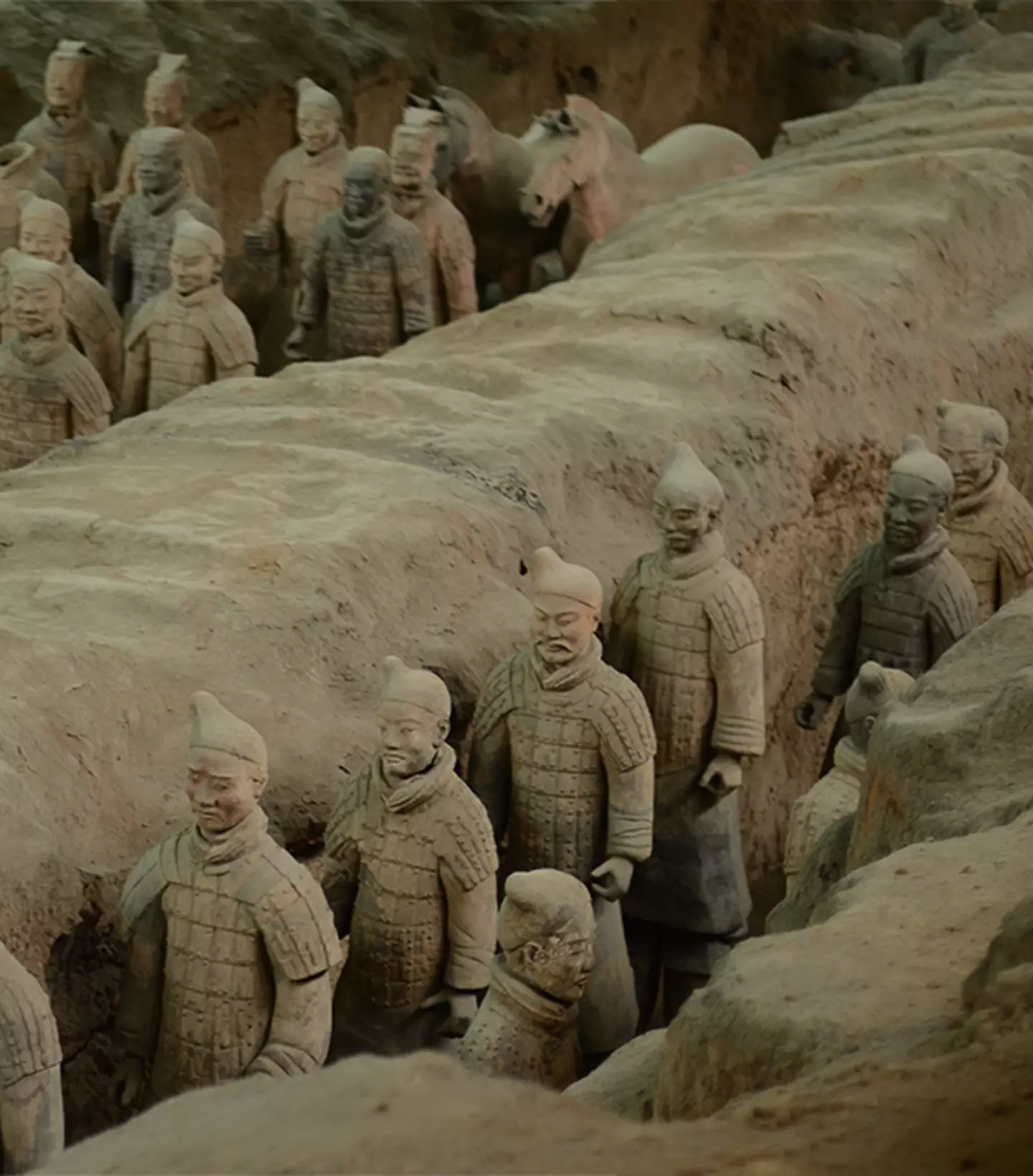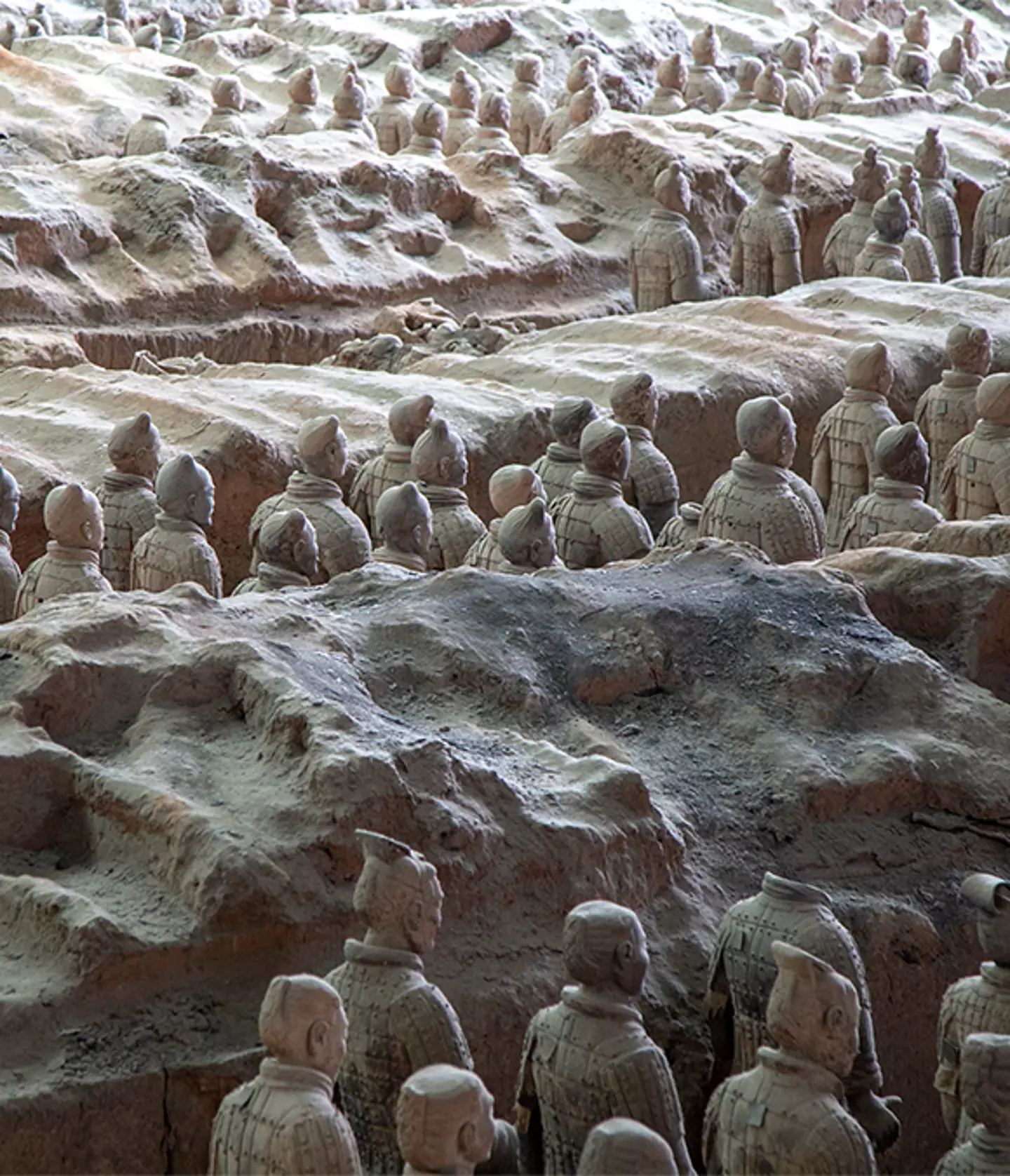Best leave this expedition to Lara Croft!
Archaeologists are our go-to explorers for finding the most obscure of things and unwrapping our planet’s history.
Recently, they uncovered the head of an ancient Greek goddess statue from over 2,000 years ago and a never-seen-before alphabet that dates back over 2,500 years.
But now the tomb of China’s first-ever Emperor has quite frankly scared them from going any further.
Qin Shi Huang, China’s first emperor, ruled from 221 BC to 210 BC and has been buried for 2,200 years.
The discovery was first made by farmers back in 1974 in the Shaanxi province of China.

Erica Stanford Photography/Getty Images
The tomb complex spans 3.9 square miles (6.3 square kilometres) and is guarded by a terracotta army of soldiers and horses.
While archaeologists have explored the surrounding area, they’ve never dared to open the tomb itself – and for good reason.
According to IFL Science, not only do they fear causing damage, but there are also rumours of deadly booby traps that could kill any curious intruders.
Unless, of course, that intruder is Lara Croft.
‘Palaces and scenic towers for a hundred officials were constructed and the tomb was filled with rare artefacts and wonderful treasure,’ wrote Chinese historian Sima Qian about the tomb 100 years after Qin Shi Huang’s death.
‘Craftsmen were ordered to make crossbows and arrows primed to shoot at anyone who enters the tomb. Mercury was used to simulate the hundred rivers, the Yangtze and Yellow River, and the great sea, and set to flow mechanically.’

Luigi Farrauto/Getty Images
Even if those ancient crossbows have long since failed, there are still concerns about liquid mercury leaking through the cracks.
‘Highly volatile mercury may be escaping through cracks, which developed in the structure over time, and our investigation supports ancient chronicle records on the tomb, which is believed never to have been opened/looted,’ one 2020 paper suggested.
Fittingly, the Emperor was rumoured to often drink wine laced with mercury and is suspected to have died of mercury poisoning at the age of 49.
Scientists have considered using non-invasive techniques to explore the tomb. But so far, none have been successful.
Technicians at the funeral mound once told the newspaper El Pais: ‘It’s like having a present all wrapped at home, knowing that the very thing you want most is inside, but you can’t unwrap it.’